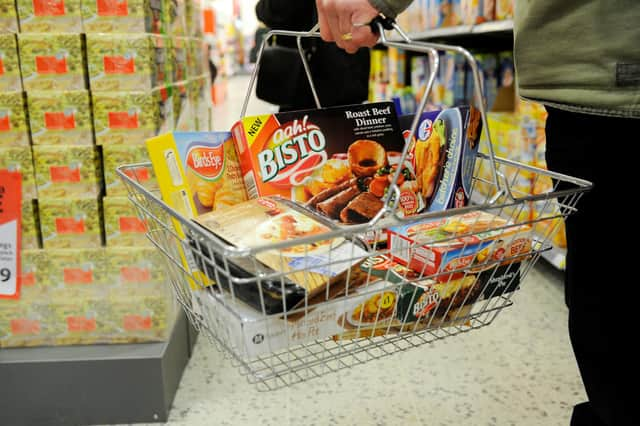Why we shouldn't panic as higher food and clothing prices trigger hike in inflation


The Office for National Statistics (ONS) said the consumer prices index (CPI) measure of inflation rose to 0.7 per cent in October from 0.5 per cent the month before. Analysts had predicted that inflation would remain at 0.5 per cent last month.
Deputy national statistician for economic statistics at the ONS, Jonathan Athow, said: “The rate of inflation increased slightly as clothing prices grew, returning to their normal seasonal pattern after the disruption this year.
Advertisement
Hide AdAdvertisement
Hide Ad“The cost of food also nudged up, while second-hand cars and computer games also all saw price rises. These were partially offset by falls in the cost of energy and holidays.”
Despite the surprise increase, the latest CPI measure remains well below the Bank of England’s 2 per cent target.
Ulas Akincilar, head of trading at the online trading platform Infinox, said: “The jury is still out on whether the Bank of England’s colossal dose of monetary stimulus will be enough to prop up the UK’s roiling economy.
“But having now printed a total of almost £900 billion, the Bank is at least achieving its secondary aim – dragging inflation back towards its target level.
“CPI remains sufficiently low to give the Bank the option to open the money taps even wider if it feels the economy needs further life support.”
Tom Stevenson, investment director, personal investing, Fidelity International, said: “While prices are on an upward path, rises are likely to be subdued for a while longer.
“Covid infections are still increasing, large swathes of the UK are under strict lockdown rules, restricting opportunities to spend, and unemployment is climbing. This is not a recipe for inflation reaching its 2 per cent target any time soon.”
Economists at the ONS said clothing and footwear prices increased by 2.5 per cent for the month, rebounding after a period of heavy discounting through the summer as stores tried to attract more customers in the face of restrictions.
Advertisement
Hide AdAdvertisement
Hide AdFood inflation was another key driver of rising inflation, as prices bounced back from deflation in September. It was particularly caused by an increase in the price of vegetables and fruit, the ONS noted.
Transport and vehicle prices also pushed higher, as the price of second-hand cars rose by 1.4 per cent, with new car prices up 0.5 per cent as demand for cars improved in the face of guidance to avoid public transport.
The largest downward pressure on inflation was caused by a fall in household energy prices.
The retail price index (RPI), a separate measure of inflation, was 1.3 per cent in October, rising from 1.1 per cent in September.
Laith Khalaf, financial analyst at AJ Bell, noted: “The current lockdown may create some short-term volatility in the number, but the overall picture is one of low, gradually rising inflation.
“The economic damage of the pandemic means that many businesses won’t want to deter valuable customers by raising prices for some time to come.”
A message from the Editor:
Thank you for reading this article. We’re more reliant on your support than ever as the shift in consumer habits brought about by coronavirus impacts our advertisers. If you haven’t already, please consider supporting our trusted, fact-checked journalism by taking out a digital subscription: www.scotsman.com/subscriptions
Comments
Want to join the conversation? Please or to comment on this article.